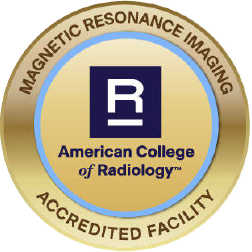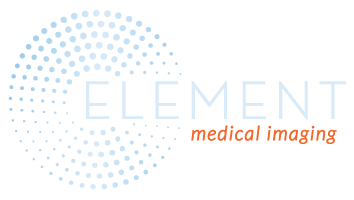Get Clear Answers with Advanced MRI Imaging

When it comes to diagnosing complex medical conditions, MRI imaging offers unparalleled clarity and precision. Whether you're dealing with joint pain, neurological symptoms, or internal injuries, an MRI scan provides detailed images of your body's soft tissues, helping doctors pinpoint issues that might not be visible with X-rays or other imaging methods. With advanced MRI technology, Element Medical Imaging ensures quick, accurate results to guide your treatment, allowing you to move forward with confidence in your healthcare journey.
Exam Explanation
Magnetic Resonance Imaging is a safe diagnostic imaging technique that uses a magnetic field and radio waves to produce detailed pictures of your body. Unlike X-rays, MRI imaging does not use radiation, making it a preferred method for many patients.
The MRI scanner sends out radio signals to the hydrogen atoms found in the water molecules in your body. These hydrogen atoms then send back radio signals, which are recorded by the MRI scanner. A computer compiles this information and produces cross-sectional images of your body, very much like slices from a loaf of bread. This procedure provides excellent images of soft tissue structures such as the brain, spinal cord, muscles, internal organs, and joint anatomy, which is why MRI diagnostic imaging is essential in evaluating a variety of health concerns.
Exam Preparation
Before your MRI scan, you will be asked if you have any metal objects in your body since metal may interfere with the magnetic field. MRI in radiology cannot be performed on people with:
- Cardiac pacemaker or defibrillators
- Neurostimulators
- Brain aneurysm clips
- Metal fragments in the eye (plain film X-rays will be done of the orbits if there is a prior history of metallic foreign body)
If you are having a scan of the head, we recommend that you do not wear heavy eye makeup as the metal particles in the makeup may interfere with your MRI exam. You may follow your normal diet and take any medications as usual before your MRI scan.
During the Exam
When you arrive, you may need to change into a gown, and will be asked to remove all metal objects before going into the scanning room. You may wish to leave your jewelry and valuables at home, or we have secured lockers where you can store these items.
The technologist will help position you on a padded table in front of the magnet. Depending on the type of exam you are having, you will then enter the scanner head first or feet first. The technologist will begin by moving the table into the magnet. During the exam, the technologist will be inside the control room watching you at all times. An intercom system allows you to talk freely with technologist.
As the exam starts, you may hear a variety of thumping noises, similar to light hammering. Some people find this noise relaxing, but we also have earplugs for your comfort. While the scanner is working, you may feel a slight vibration. This procedure takes usually 45 – 60 minutes depending on the exam. Some exams may require an injection of a contrast material, dependent on the exam preformed.

